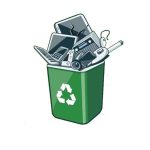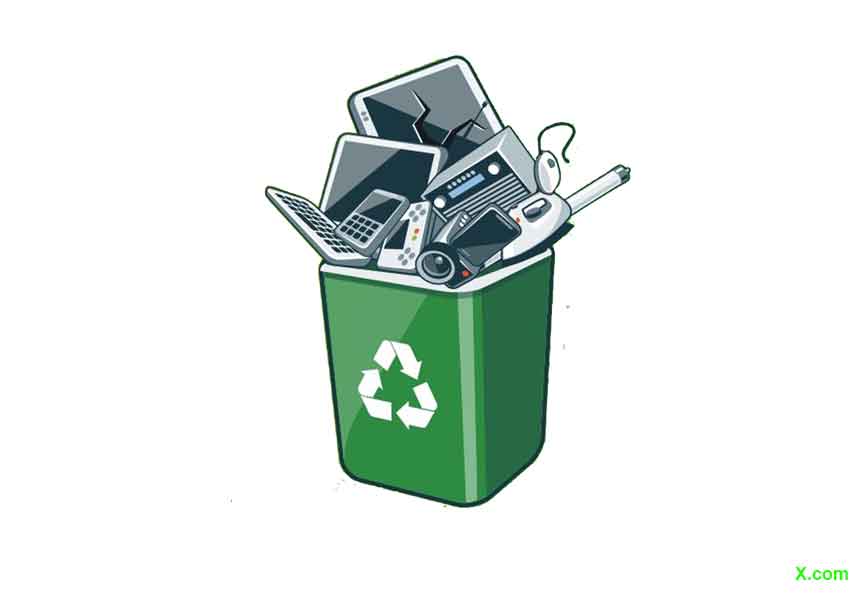
Dr. N. Munal Meitei
Environmentalist currently working as DFO/Chandel
email- nmunall@yahoo.in
Mahatma Gandhi emphasized “Sanitation is more important than independence”.
International Day of Zero Waste is celebrated on 30th March with this year’s theme on: “textile and fashion waste”. The fashion industry’s current linear model of overproduction and overconsumption has significant impacts on environment, social and the global waste pollution crisis. Over 92 million tons of textile waste are generated annually – that’s a garbage truck full of clothing incinerated or dumped in landfills every second and packed into standard shipping containers and placed end-to-end, in one year, it would wrap around the globe 25 times.
Clothing production doubled from 2000 to 2015, while garment use duration decreased by 36%. Doubling the number of times a garment is worn would reduce greenhouse gas emissions by 44%. The use of fossil fuel-based synthetic fibers contributes to microplastic pollution, harming ecosystems and human health. Discarded clothing often ends up in the Global South, where inadequate waste management leads to open dumping, burning and severe environmental and social consequences. Poor communities bear the brunt, facing pollution and declining quality of life.
Every year the textile sector produces 4–8% of global greenhouse gas emissions and it uses 215 trillion litres of water, the equivalent of 86 million Olympic-sized swimming pools. Globally, consumers lose about Rs. 38180 billion of value each year by throwing away clothes that could continue to be worn and some garments are estimated to be discarded after just 7 to 10 uses. About 11% of plastic waste comes from textiles, making it third after packaging and consumer goods.
Only 8% of textile fiber in 2023 were made from recycled sources, with less than 1% from recycling. A lack of fiber recycling practices is estimated to equate to an annual material value loss of more than Rs.8300 billion.
Upstream solutions can minimize pollution of air, land and water and decrease the extraction of precious and limited natural resources. Humanity’s unsustainable production and consumption practices are driving the planet towards destruction, while global waste management services remain ill-equipped to handle this crisis. Waste pollution threatens human health, costs the global economy hundreds of billions of rupees and aggravates the triple planetary crisis: the crisis of climate change, the crisis of nature, land and biodiversity loss, and the crisis of pollution and waste.
The fundamental and brutal truth is, “humanity is treating our planet like a garbage dump”. Humanity generates an estimated 2.24 billion tons of solid waste annually of which 52% is mismanaged. Without urgent action, municipal solid waste will double to almost 4 billion tons each year by 2050. Meanwhile, pollution and chemicals are poisoning our water, air and soil.
Zero waste is the key component that generates waste throughout its life cycles from the point of manufacture upto the end. Waste management is a challenge for every household, city and town as effective waste management is relatively expensive, usually comprising 20%–50% of municipal budgets.
India produces 62 million tons of waste annually, with 70% collected and only 12 million tons treated, while 31 million tons end up in landfills. Studies reported that depending on the city, 2-24% of the municipal solid waste (MSW) in India gets burned, adding to the local ambient air pollution where up to 4% gets burned in the open every day.
A staggering 10% of all global greenhouse-gas emissions come from food wastes. According to UNEP food wastage index, Indian lost 74 million tons of food every year, which is 22% of our output averaging 50 kg per person enough to feed for 690 million people who go to bed hungry. The country stands 2nd in terms of household food wastage worldwide after China. We are in a developing country and we should deal our waste production properly- otherwise, it’s really posing a threat to our national security.
According to the annual report of the Central Pollution Control Board (CPCB) during 2020-21, the municipal solid waste generated in Manipur is 282.3 tons per day (TPD) which include 60% as compostable wastes and 40% as non- compostable wastes including construction waste. Out of which 190.3 TPD are collected and 108.6 TPD are treated and 81.7 TPD landfill including in Rivers, Nalas and Lakes. The worst scene comes when it drains into our Loktak Lake, the largest fresh water lake in Eastern India and the best mirror of tourism in the state. The state’s 92 TPD of uncollected waste remains as a pernicious to our environment.
In the State, house-to- house collection is covered in all 27 ULBs and segregation is being carried out in 22 ULBs only by transporting them in open vehicles. Open landfills are in operation at Imphal, Thoubal, Bishnupur, Kakching and Jiribam MC. The State has a complete ban on single use plastic since 2017, but an estimated 8292.8 TPA were produced during 2019-20.
We all have felt the distinctive foul smell of the Nambul River, the toxic level of its water and amount of solid waste deposition at the center of the capital as a symbol of mismanagement. As seen from the ground, to increase the frequency of waste collection, the number of agencies and giving enough spaces for disposal are some of the urgent challenges. Solid Waste Treatment Plant at Lamdeng will not be enough to take the loads and hence state need to increase more treatment plants by observing the NGT guidelines.
Currently when collections are stopped for one or two days, heaps of solid wastes are seen to pile up in different parts of Imphal Municipal. The same are for other Municipals also. Therefore state need to strictly implement, the Manipur Plastic Policy 2022 and Municipal Solid Waste Management Policy 2022 to become a zero waste state.
The benefits of zero waste include clean water, fresh air, fertile soils, sanitary cities, resilient economies and sustainable extraction. The solution, in the first place, is the minimization of waste. Where waste cannot be avoided, recovery of materials and energy from waste as well as remanufacturing and recycle into usable products should be the second option. Recycling leads to substantial resource savings as for every ton of paper recycled, 17 trees and 50% of water can be saved. Moreover, recycling creates jobs: the sector employs 6 lakh people in India alone.
As a consumers, choosing to reuse instead of throwing away, let’s remember, ‘7R’ – Refuse, Reduce, Reuse, Repair, Repurpose, Recycle and Recover. Thus, we all are to aware the harmful effects of dumping or burning waste. Zero waste is our civic and moral responsibility. Every change we make today in waste management, can save the society and the country.













